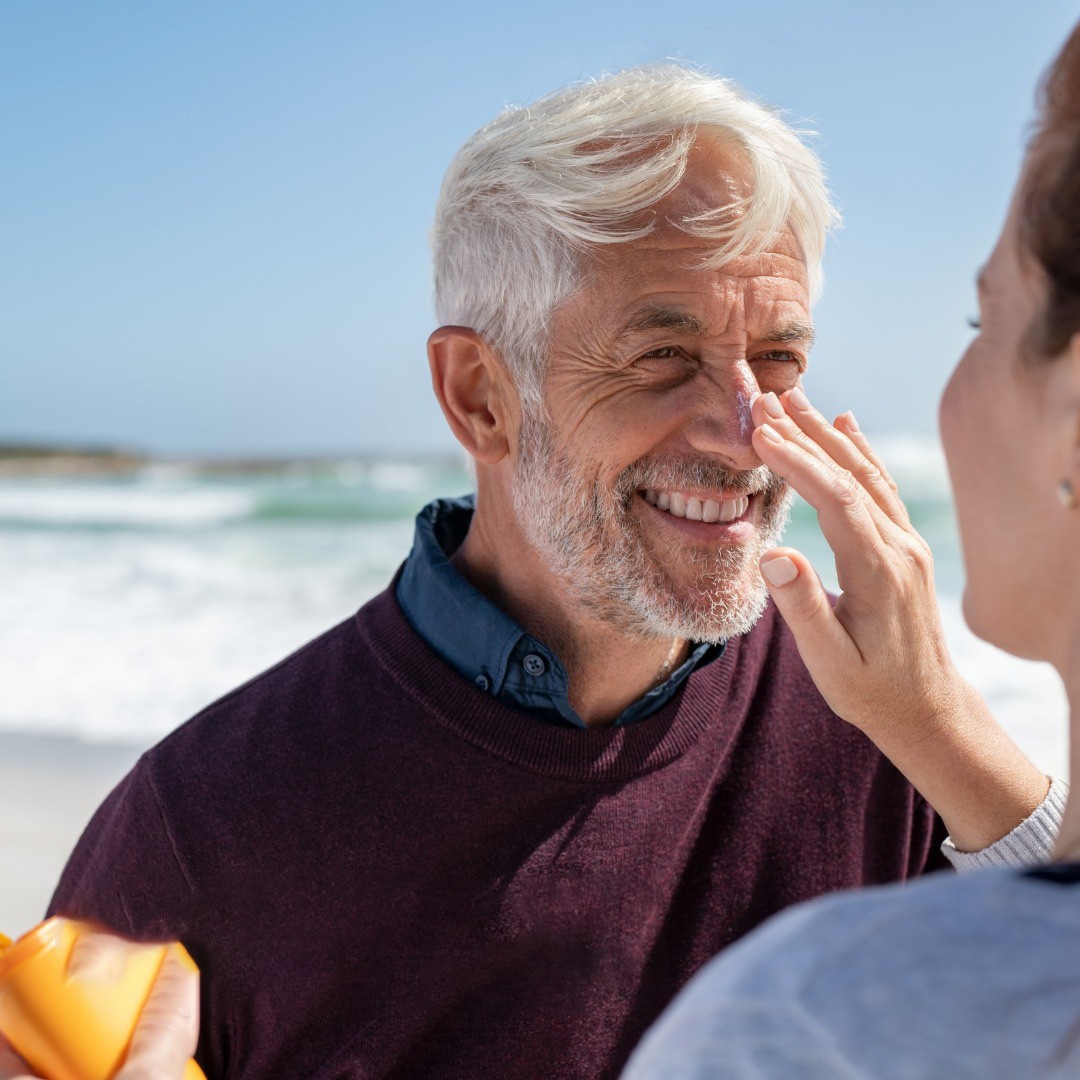Save your skin
Prevention
Every year, over 2.2 million Americans receive a skin cancer diagnosis. More people develop skin cancer than any other type of cancer. However, unlike many other types of cancers, skin cancer is highly preventable and treatable if detected early. Here’s how.
Sunscreen: Use a sunscreen labeled “Broad Spectrum” with an SPF of 30 or higher. The SPF rating indicates the level of protection from UVB, and the “Broad Spectrum” label indicates protection from UVA. It is critical to protect against both types of radiation.

Protective clothing
Clothing can block harmful UV radiation from reaching the skin. A key benefit of wearing sun protective clothing is that this type of protection will not sweat or rub off.
Different fabrics offer various levels of UV protection, so choose long-sleeved shirts, long pants, or long skirts for optimal coverage and protection. Dark colors generally offer more protection than light colors. Tightly woven fabrics offer better protection than loosely woven ones, and dry fabric is generally more protective than wet fabric.
If light can be seen through a fabric, UV radiation can also penetrate the material.
When shopping for sun-protective clothing, it is a good idea to look for items labeled with a UV Protection Factor (UPF) value, which ranges from 15 to 50+. A higher UPF indicates better protection from UV rays. UPF-rated clothing tends to be lightweight and comfortable, and the materials are often tightly woven and may include special coatings to absorb radiation.

Hats
Select wide-brimmed hats with a tight weave that covers your head, neck, and ears. Some hats may also have a UPF rating.
Extended exposure to sunlight without proper eye protection has been associated with a higher risk of certain eye diseases and skin cancers near the eye. Select sunglasses that block 99% to 100% of UVA and UVB rays, as indicated on the label. Look for specific labels such as ‘UV absorption up to 400 nm’ or ‘Meets ANSI UV Requirements,’ indicating blockage of at least 99% UV radiation.
Children should be given smaller versions of protective adult sunglasses, not toy sunglasses.
Seek shade to minimize direct UV exposure between 10 am to 4 pm, which is when UV radiation is most intense. As with hats, shade does not block indirect or ambient sunlight, making sunscreen an effective complement to these forms of protection.
Early detection
Monitor your skin at home
Monitor your skin at home by looking for changes in the size, shape, color, or texture of moles. For a step-by-step guide to how to perform a skin exam at home, check out this useful guide from American Academy of Dermatology: Find skin cancer: How to perform a skin self-exam (link at Find skin cancer: How to perform a skin self-exam (aad.org))
Get routine skin cancer screenings
Routine skin cancer screenings from a dermatologist can significantly increase the chances of detecting skin cancer early, leading to more effective treatments and better outcomes. Dermatologists regularly encounter skin cancers — this is important because skin cancers do not always resemble typical cases. A dermatologist is more likely to promptly identify a suspicious lesion, allowing for timely treatment and better health outcomes for patients.



